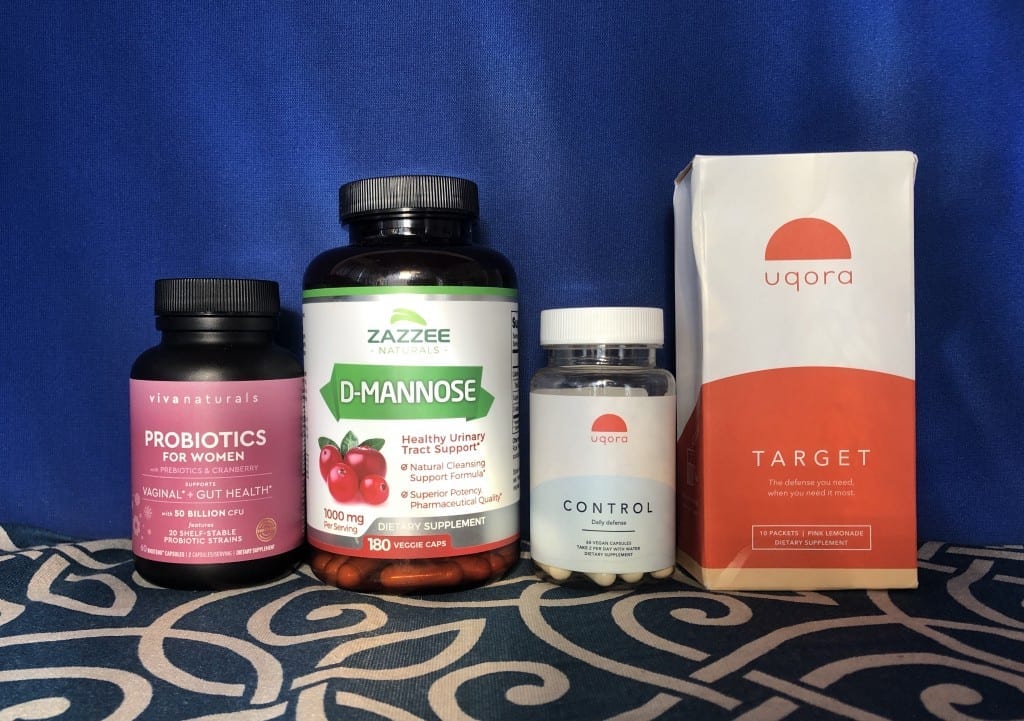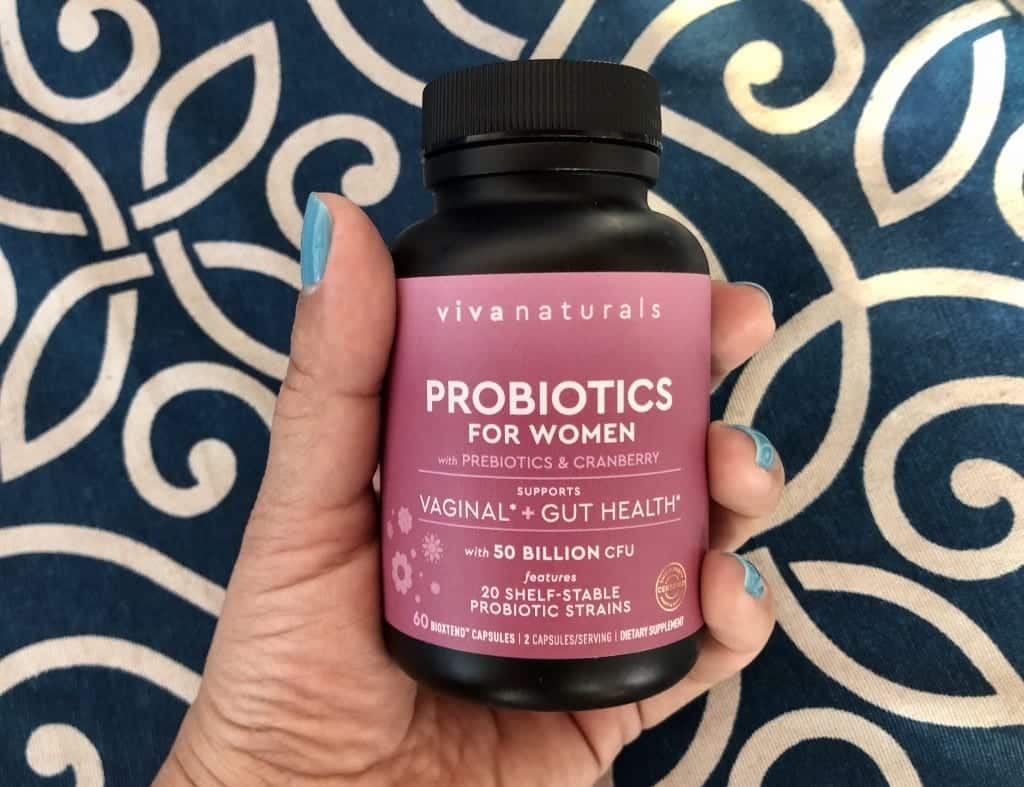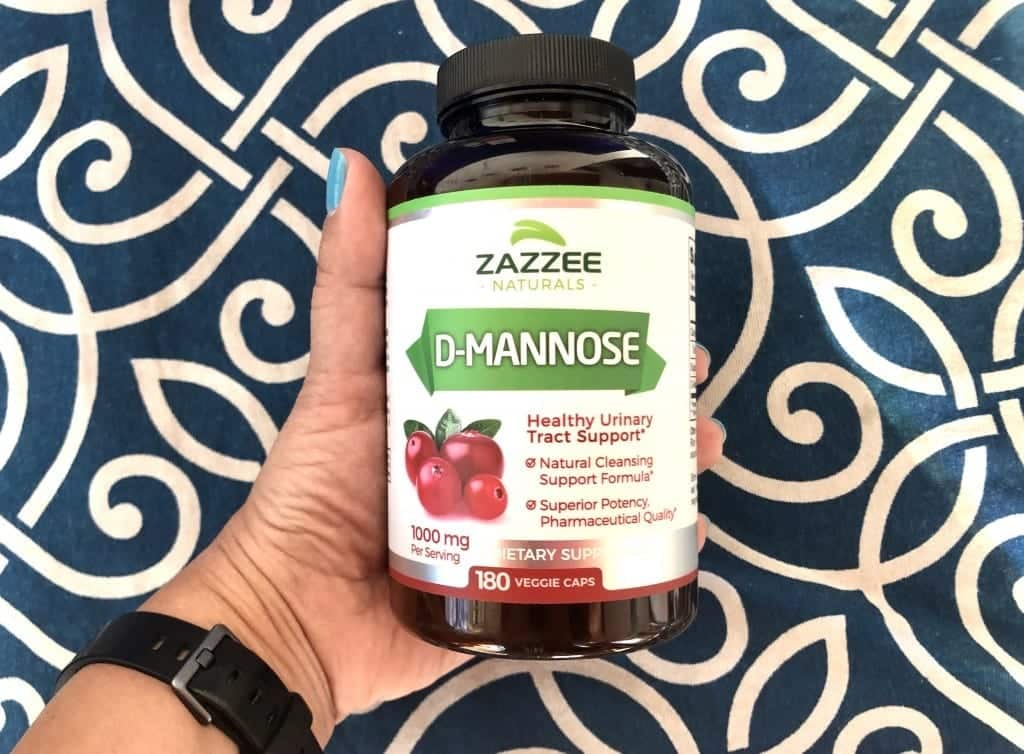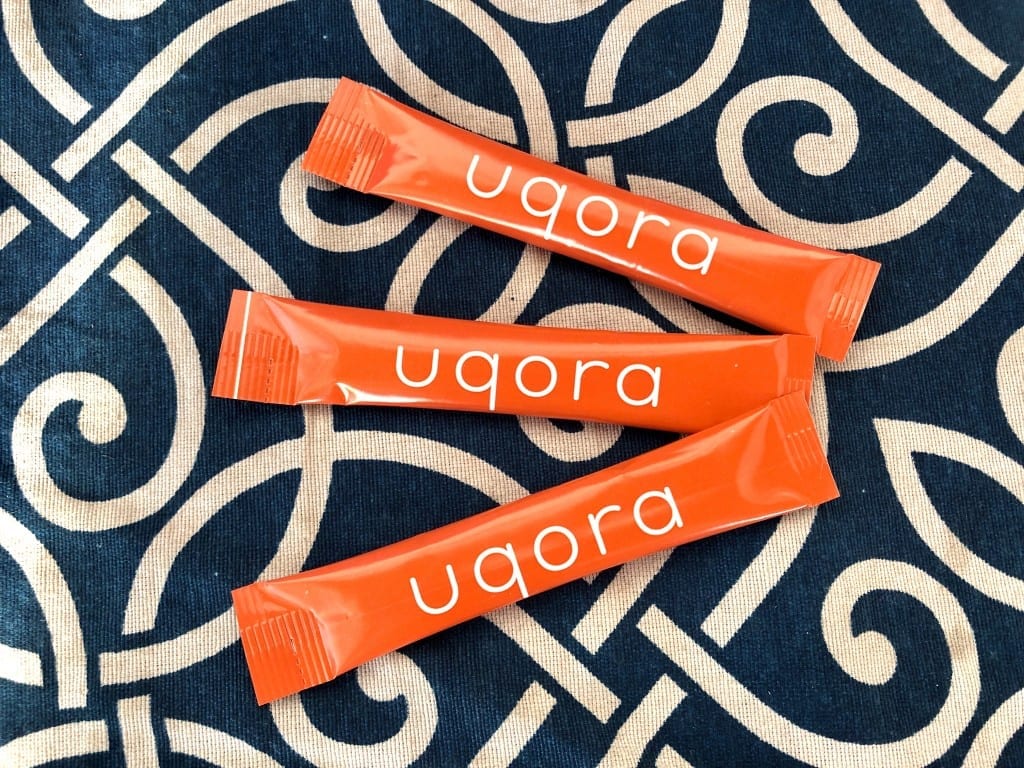Adventurous Kate contains affiliate links. If you make a purchase through these links, I will earn a commission at no extra cost to you. Thanks!
One of the biggest challenges of my past decade of travel has been learning how to prevent UTIs while traveling. For about 15 years, I have suffered from several urinary tract infections per year, and it has been one of the most painful and irritating things to deal with while on the road.
This has been a huge part of my life, but this is the first time I’ve shared it publicly.
Ask me about my UTI history while traveling, and I can tell you about holding my empty prescription bottle of Macrobid at a pharmacy in Mexico, begging a skeptical pharmacist to just give me some, that I’ve been prescribed it before. I can tell you about missing a morning of exploring Paris as I waited to be seen by a doctor in a cramped office by Montmartre. I can tell you about getting an ultrasound in posh Bumrungrad Hospital in Bangkok after several UTIs in a row left me in nonstop pain for weeks.
I may travel more than most women, but I know that I’m not alone when it comes to frequent UTIs. Most women have suffered from a UTI at least once in their lives, and many women get them several times a year, despite taking as many precautions as possible.
For many women, UTIs are most often caused by sex. For this reason, our pain is often dismissed by doctors and we are simply prescribed antibiotics over and over, in a time when antibiotic resistance is a scary thing to contemplate.
However, there are ways to prevent UTIs that keep you from having to take more antibiotics. I have spent years in UTI forums online that are populated with desperate women in my same position. Women who keep being told to drink cranberry juice and pee after sex and who know that that’s not enough. Women desperate for relief who are eager to try anything, and have tried it all.
After years of trial and error, I have FINALLY figured out how to prevent UTIs while traveling.
This is LIFE-CHANGING.
I’m not being hyperbolic — ask any woman who learned how to get her UTIs under control, and she would say the same thing. It absolutely changes your life. Suddenly, you can enjoy sex again without worrying that it’s going to cause you an infection.
How did I go from having a UTI every few weeks to going several months without any UTIs? It’s a combination of taking certain probiotics, taking D-Mannose twice a day and extra after sex, and changing my behavior. Each of these is a vital step in preventing UTIs.
Disclaimer: I am not a medical professional. Which is obvious, because UTIs are an issue that many medical professionals do not seem to have an interest in treating or alleviating UTIs beyond prescribing antibiotics. If you’re suffering from chronic UTIs, you should speak with a medical professional, because it could be the indication of something serious.
Also — this post is NOT sponsored at all, but I will earn a small affiliate commission at no extra cost to you if you buy any of the supplements through the links.
Table of Contents

UTIs and Misogyny
The most common trigger for UTIs in women is sex. For many women, having sex just once can be the incident that causes a UTI. Because of this, many people, including medical professionals, don’t take the debilitating pain of UTIs seriously.
I fully believe that we don’t have a clear solution to treating UTIs naturally because it’s wrapped up in misogyny. UTIs are something painful that happens to women who have sex. Well, if you weren’t so sex-crazed, you dirty slut, you’d feel just fine!
Even in the film version of Eat, Pray, Love, Liz gets a UTI and it’s played off almost positively — well, you’re having sex again, so here you are! (Ryan Murphy directed the film. Had a woman directed it, I think that scene would have played out very differently.)
Imagine being in extreme pain from a UTI and having to wait forever to see a doctor. You give a urine sample and pace the office for two hours until you’re seen. The doctor looks at you, smiles, and says, “You know, you should always pee after sex.”
Are you kidding me? Do you think I’ve never been told this before?
I do everything right. I pee after sex. I pee before sex. I guzzle water before sex. I shower both before and after sex. I lie in the bathtub, legs splayed in the air, letting the stream of water land directly on my nether regions.
We pee after sex. WE ALL PEE AFTER SEX. And we still get UTIs.
I once heard someone say that if men could get pregnant, you could get an abortion at the ATM. I feel the same way about UTIs. If UTIs after sex were as common and painful for men as they are for women, we would have had a concrete prevention system decades ago.
If I were a crazy-rich billionaire, I would honestly be funding tons of FDA research into UTI prevention supplements. Evidence shows that probiotics and D-Mannose can reduce the frequency of UTIs in women — but because the only evidence is from clinical studies, not proper FDA trials, doctors don’t tell their patients about it.

Dealing with UTIs While Traveling
If you have had a UTI — and most women have — you know how debilitating it can be. Suddenly, out of nowhere, you are in horrific pain. Peeing feels like you have razor blades slicing up your urethra, and as soon as you’re done peeing, you need to pee again. And you can’t function in any real way until it’s treated.
At home, it’s often easy — if you’re a frequent UTI sufferer, you just call your doctor and they call in a prescription for Macrobid (nitrofurantoin) or whatever antibiotic they usually prescribe you.
What do you do when you get a UTI while traveling?
But what happens if a UTI crops up while you’re on the road? How do you find medical care? Where do you go? What if the language and alphabet are totally different?! You feel so helpless.
Every country has a different healthcare system and different countries treat UTIs differently. And believe me, I know. I have traveled to more than 80 countries in the past decade and have have had urinary tract infections in nearly a dozen different countries.
In many developing countries, you can simply go to a pharmacy, tell the pharmacist you have a UTI, describe your symptoms, and the pharmacist will give you antibiotics, no examination necessary.
In other countries, you’ll need to see a doctor and get a prescription. That could mean going to an urgent care clinic, going to the local international medical center, or going to the nearest hospital.
My top recommendation to frequent UTI sufferers is to ask your doctor for an extra prescription for a UTI before you go on a trip, just in case you get one, so you won’t have to deal with medical care abroad. Some doctors will be happy to do this; some doctors will not do this.
While I recommend seeing a travel doctor before a big trip, this antibiotics prescription is something you should get from your regular doctor, since they are the ones who know your UTI history.
If a UTI hits while you’re traveling, look up where to go in your guidebook, do online research, or ask in expat groups. Women expats can be especially helpful for this; if you don’t know any expats, ask a woman who works at a hotel or in the travel industry.

How to Prevent UTIs
Preventing UTIs is more than just peeing after sex and drinking cranberry juice. It’s a combination of taking the right supplements and modifying your behavior, both your daily habits and sexual habits.
I’ve found that there are three categories of UTI prevention:
- Take the right supplements.
- Modify your behavior.
- Modify your sexual behavior.
UTI Prevention Supplements
I have tried SO many different combinations of UTI prevention supplements over the years. Cranberry extract. Calcium citrate. Uva Ursi. And none of them truly worked that well.
Finally, I have found a supplement combination that has kept me from getting UTIs for months:

Probiotics to Prevent UTIs
You may have heard of probiotics in conjunction with gut health — probiotics are the “good bacteria” that help your digestion. But some strains of probiotics are incredibly important for your vaginal health as well, which plays into preventing UTIs.
Some clinical studies in the United States, including this one, have shown that certain strains of probiotics are effective in preventing UTIs in women: specifically, the lactobacillus rhamnosus and lactobacillus reuteri strains. This study found that women who frequently get UTIs taking these specific probiotics reduced the rate of UTIs in their subjects from six per year to 1.6 per year.
Think of it this way: when you have good bacteria clinging to your vaginal walls, it blocks bad bacteria from being able to attach to the vaginal walls and later enter your urinary tract. For that reason, you want the good bacteria in your vagina. It’s a protective barrier.
Conversely, taking antibiotics can destroy the good bacteria in your system. This is one reason why some women get recurrent UTIs — because they get a UTI, take antibiotics to kill the bacteria, the antibiotics kill the good bacteria as well, and later, more bad bacteria is able to land on the vaginal walls because the good bacteria isn’t there.
Most doctors don’t tell you this, which drives me crazy! They should! Everyone should take probiotics whenever they’re prescribed antibiotics!
When I had strep throat recently in Mexico, I was given a prescription for probiotics along with my antibiotics to keep my good bacteria levels up. This has NEVER happened when I’ve had strep in the US.
For this reason, I take probiotics every day to prevent UTIs.
The brand I take is Viva Naturals Probiotics for Women.
I chose this brand after extensive research because it is the Cadillac of probiotics for women.
Viva Naturals Probiotics for Women contains 50 billion CFU (most sources recommend a minimum of 10-15 million CFU); 20 different strains of probiotics; cranberry powder; and 50 mg of prebiotics, which are basically food for probiotics that help them work better.
Most importantly, this brand of probiotics contains both lactobacillus rhamnosus and lactobacillus reuteri — the two strains of probiotics that studies found reduced recurrent UTIs for women. And it doesn’t need to be refrigerated, which makes it convenient for travel.

D-Mannose to prevent UTIs
When you mention UTIs, people often say, “Drink cranberry juice!” This is bad advice — while cranberry extract contains properties that can prevent UTIs, cranberry juice is mostly sugar.
So what SHOULD you be taking? D-Mannose — a natural sugar found in lots of fruits, including cranberries.
THIS is the effective product — not cranberry juice.
Like probiotics, there is clinical data to back this up. A clinical study found that D-Mannose powder reduced recurrent UTIs at the same rate as nitrofurantoin (Macrobid, the commonly prescribed antibiotic).
In other words, this study found that taking D-Mannose to prevent UTIs is just as effective as taking antibiotics. That is HUGE.
The brand I take is Zazzee Naturals D-Mannose.
There isn’t a huge difference with D-Mannose brands — they’re all pretty similar, though if you have a corn allergy, you should seek out D-Mannose made from non-corn sources. I chose Zazzee Naturals because it has the cheapest unit price overall.
You can save even more if you buy D-Mannose powder rather than capsules, but because I travel so often, it’s much easier to pack capsules rather than a big jar of powder.
One BIG tip: D-Mannose doesn’t work effectively if it’s too diluted. You may think that more water is better, but when you take D-Mannose, you should stick to half a cup of water, wait half an hour to 45 minutes for it to work, then drink more water.
(Side note: when I had a UTI in Paris several years ago, I was given a single packet of powder to drink with water rather than an antibiotic prescription. While I don’t know for sure, today I suspect that I was given D-Mannose powder.)

Uqora for UTIs
Uqora is a line of UTI-prevention products and they are an absolute godsend. What I love is that they are specifically for targeting UTIs, and were created by a frequent UTI sufferer desperate for relief. The Uqora products are primarily made from D-Mannose, but they also supplement with other ingredients.
In my years of researching UTI prevention, I have never come across supplements that use several different herbs to treat UTIs specifically until now.
Uqora has three different products:
- Promote, a UTI-prevention daily probiotic (which I don’t take)
- Control, a UTI-prevention daily D-Mannose supplement
- Target, a UTI-prevention powder that you mix with water and drink after sex or a UTI-causing event
You can buy all three products together for a discount.
Control is primarily D-Mannose — a single dosage of two capsules is 600 mg. It also contains green tea extract, turmeric extract, and black pepper powder.
You take Control daily to clear out the bacteria from your bladder.
Target is a much higher dosage of D-Mannose — a packet gives you 2000 milligrams (2 grams). It also contains Vitamin C, Vitamin B6, Calcium, Magnesium, and Potassium.
You mix a Target packet with water and take it after UTI-triggering activities to flush your system. For most women, the UTI-triggering event is sex. For others, it can be working out or going a long time without urinating. The Uqora people recommend taking it every three days, even when you don’t have a UTI-triggering event.
Uqora is a bit on the pricey side, and you may be wondering if it’s necessary. Couldn’t I just take more D-Mannose? It’s up to you — you could absolutely try just using similar doses of D-Mannose and see how it works for you.
But I have to say that I LOVE Uqora Target, the post-sex powder drink, in particular. After I take Target, which tastes like pink lemonade, my bladder feels so CLEAN and EMPTY. This feels different to me from just taking D-Mannose. But keep in mind that every person is different.
Also, the Uqora customer service team is great. They offer big discounts if you subscribe, but I always have to order several months’ worth at once due to my travel schedule. They came to me and offered to bring the price down to accommodate my irregular deliveries.
The Supplements I Take to Prevent UTIs
Every morning when I get up, this is what I take:
- Two capsules of Viva Naturals Probiotics for Women
- Two capsules of Uqora Control (600 mg D-Mannose)
- One capsule of Zazzee Naturals D-Mannose (500 mg D-Mannose)
Every evening before I go to bed, this is what I take:
- Two capsules of Zazzee Naturals D-Mannose (1000 mg)
After sex, or whenever I feel like I need extra prevention, or every three days, this is what I take:
- One Uqora Target powder packet with half a glass of water (2000 mg D-Mannose)

UTI Prevention Tips
It’s not just about the supplements — there are other ways to reduce your risk of UTIs. Here are some of my behavior-based UTI prevention tips:
Stop wearing thongs. Thongs — I’m talking about underwear here, Australians — very easily bring bacteria toward your vaginal area. You should only wear them when necessary (like a formal dress that can’t show panty lines). NEVER work out in a thong. I learned the hard way that exercising while wearing a thong is one of my UTI triggers.
Hydrate frequently. You don’t need to become a guzzling machine, but we could all stand to hydrate better. Get in the habit of having a big reusable water bottle by you while you work or watch TV.
Don’t sit around in gym clothes post-workout. Shower immediately and put on new underwear.
Don’t sit around in wet bathing suits. As soon as you’re done swimming for the day, it’s time to change.
Urinate frequently. When you hold it in, bacteria has a chance to grow. This is especially important when you’re traveling and not sure when you’ll have a chance to use a bathroom.
Eat more vegetables and consume less sugar. Eating healthy can contribute to a healthy vaginal microbiome. Sugar can worsen UTI symptoms.
Consider trying Whole30. Whole30 is a 30-day meal plan where you don’t consume sugar, alcohol, dairy, grains, legumes, or processed foods. Your body feels SO much better when you cut all of this out at once. I’ve done it twice.
Eating Whole30 is not sustainable full-time as it’s so strict, but even after the 30 days end, I have lasting effects (my skin cleared up permanently!), and went for several months without any UTIs. Read about my Whole30 experience here.
Modifying Your Sexual Behavior
Shower before sex — and have your partner shower, too. This is one tip I’ve seen frequently shared on lots of forums. For lots of women, simply showering with their partner beforehand can make a huge difference in reducing the frequency of UTIs.
Pee after sex. It’s most effective if it’s a strong stream, rather than a few droplets, so you may want to drink a glass of water before sex.
Shower after sex, too, or just wash your nether regions.
Do not cross-contaminate. I can’t believe I’m about to write this on my blog, but if anything goes anywhere close to a butt during sex, it doesn’t go anywhere near a vag until it’s been thoroughly disinfected.

Will this work for me?
Many women have been able to reduce the frequency of UTIs by taking probiotics and D-Mannose and modifying their behavior. I am one of those women, and I can’t tell you how grateful I am that my life is no longer hampered by these frequent infections.
That doesn’t mean that my personal combination will be effective for you. Every body is unique.
However, the clinical studies have shown that lactobacillus rhamnosus and lactobacillus reuteri probiotics and D-Mannose reduce the frequency of UTIs. For that reason, I recommend starting your process with probiotics containing these strains and D-Mannose supplements.
Even though this combination of supplements has worked for me for months, this may not work for me every single time. I know this, and if I get another UTI, it’s not the end of the world.
But if this means I get one UTI per year instead of five UTIs per year, it is SO worth it.

Please share this post with the UTI sufferers in your life.
So many of us suffer from frequent UTIs, and it doesn’t have to be that way. If you have women in your life who get UTIs frequently, I recommend sharing this post with them. You could change their lives for the better.
The reason why I’ve been blogging about solo female travel for ten years is because I want to help women. Helping women is the center of everything I do here — it’s what motivates and drives me. But I have the feeling that this may be my most helpful post of all.
See all my resources for independent female travelers here.

Do you have frequent UTIs? What works for you?